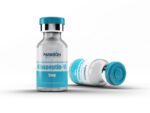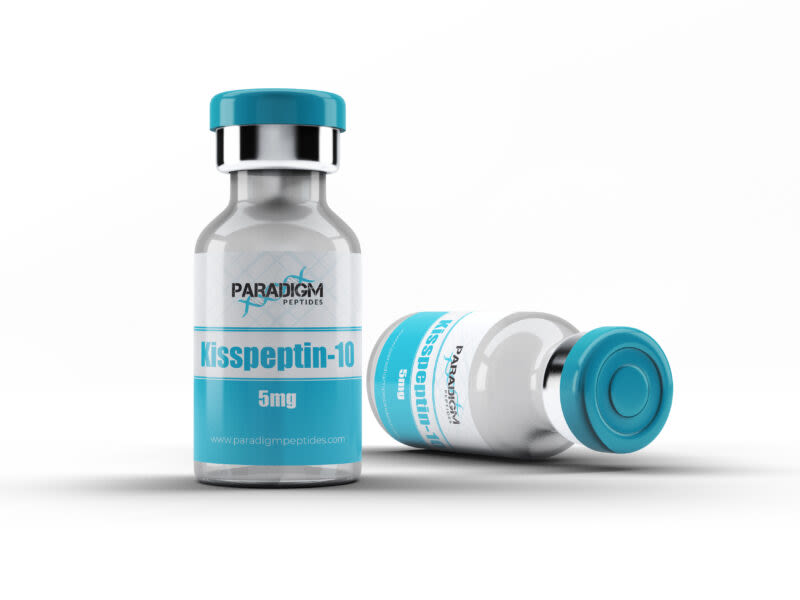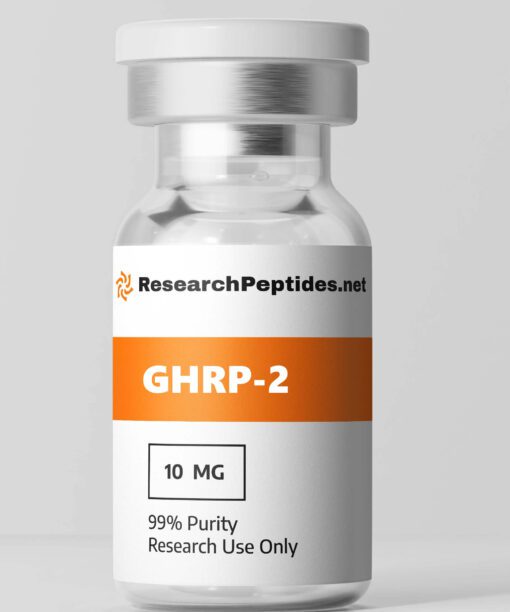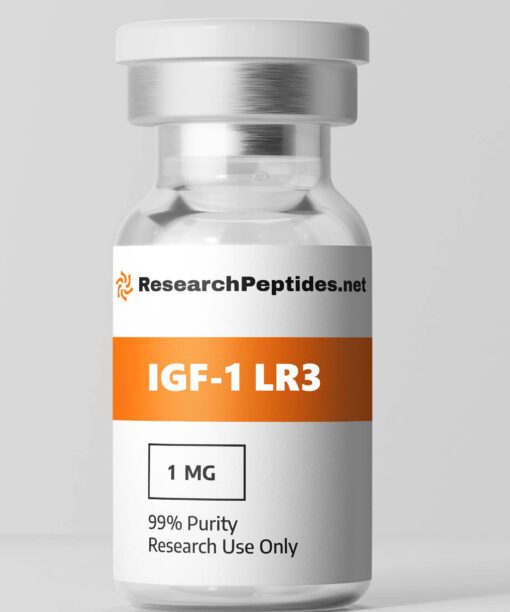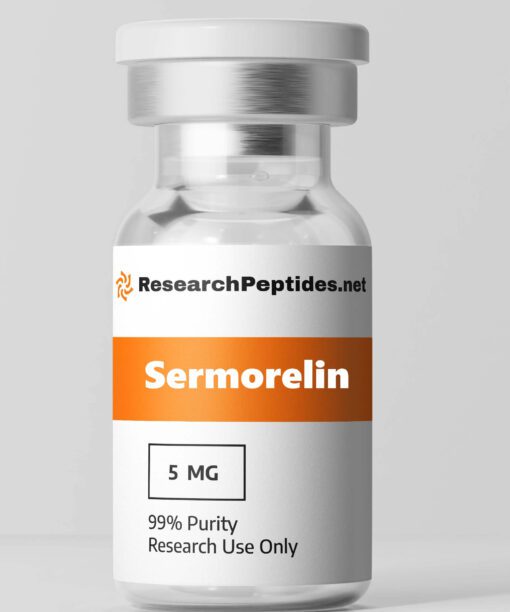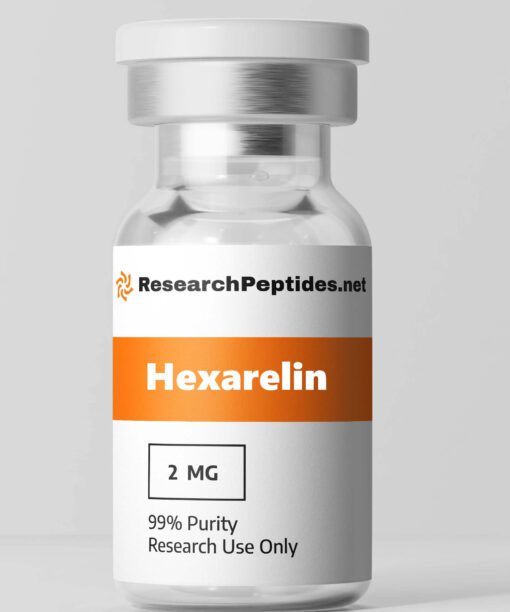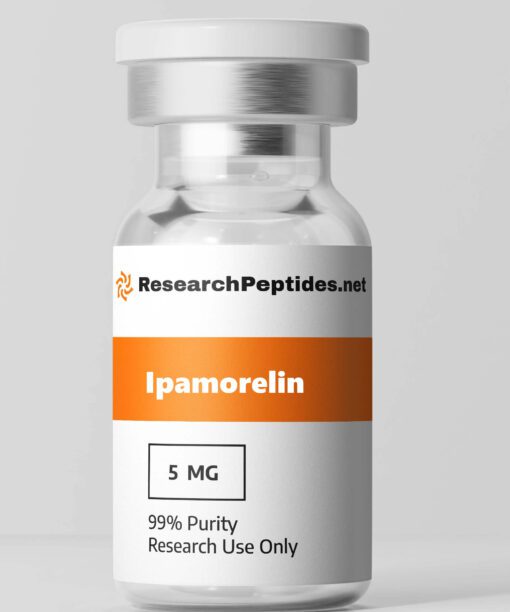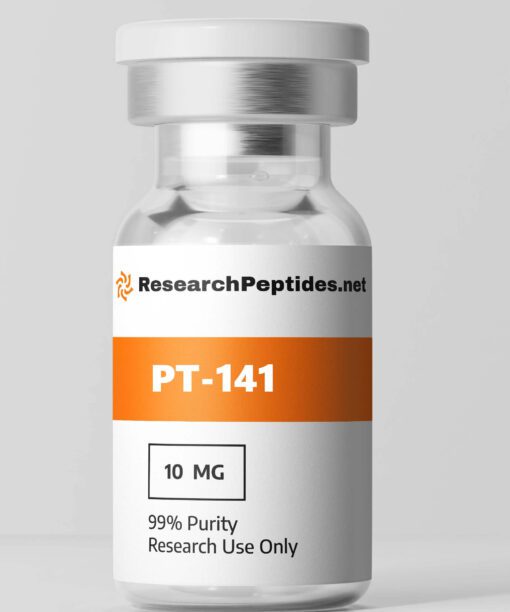Kisspeptin-10 Paradigm Peptides for Sale
Unlocking the Potential of Kisspeptin-10 Paradigm Peptides: A Groundbreaking Breakthrough in Reproductive Health
Introducing Kisspeptin-10 Paradigm Peptides – a groundbreaking research product that has shown immense potential in various studies. This innovative peptide has been found to have positive effects on reproductive health and hormonal regulation. With its concise formulation and promising results, Kisspeptin-10 Paradigm Peptides is paving the way for exciting advancements in the field of endocrinology.
1. What is Kisspeptin-10 Paradigm Peptides?
Kisspeptin-10 Paradigm Peptides is a synthetic peptide that has been extensively studied in non-human research models for its role in regulating reproductive function and hormone secretion. It is derived from the naturally occurring neuropeptide kisspeptin, which plays a crucial role in the activation of the reproductive axis.
Kisspeptin-10 Paradigm Peptides consist of ten amino acids and possess high potency and stability compared to other kisspeptin analogs. The structure of Kisspeptin-10 Paradigm Peptides allows it to bind to the kisspeptin receptor (GPR54) on neurons in the hypothalamus, leading to the release of gonadotropin-releasing hormone (GnRH).
GnRH then stimulates the pituitary gland to secrete luteinizing hormone (LH) and follicle-stimulating hormone (FSH), which are essential for proper reproductive function. This peptide has shown promising effects in stimulating ovulation, increasing sperm production, and regulating menstrual cycles in non-human studies.
Kisspeptin-10 Paradigm Peptides offers researchers a valuable tool for investigating the neuroendocrine control of reproduction and exploring potential therapeutic interventions for reproductive disorders. Its unique composition and mechanism of action make it an important peptide in advancing our understanding of reproductive biology.
2. How Does Kisspeptin-10 Paradigm Peptides Work?
Kisspeptin-10 Paradigm Peptides exert its effects by binding to GPR54 receptors located on neurons within the hypothalamus. This interaction triggers a cascade of events that ultimately leads to the release of GnRH, a key regulator of reproductive function. GnRH stimulates the pituitary gland to produce LH and FSH, which are essential for the development and maturation of reproductive cells in both males and females.
In non-human research models, Kisspeptin-10 Paradigm Peptides has been shown to stimulate the release of LH and FSH, leading to increased ovulation in females and enhanced sperm production in males. This peptide acts as a potent activator of the reproductive axis, playing a pivotal role in regulating fertility and hormone secretion. The precise mechanism through which Kisspeptin-10 Paradigm Peptides activate GPR54 receptors is still under investigation.
However, it is believed that the binding of this peptide induces conformational changes in the receptor, initiating intracellular signaling pathways that ultimately lead to the release of GnRH. Further research is needed to fully elucidate the intricate molecular mechanisms underlying its action.
3. Kisspeptin-10 Paradigm Peptides Benefits
Kisspeptin-10 Paradigm Peptides has demonstrated numerous benefits in non-human research studies, particularly in relation to reproductive function and hormone regulation. Some key benefits observed include:
1. Stimulation of ovulation: Kisspeptin-10 Paradigm Peptides has been shown to effectively induce ovulation in non-human subjects by activating the release of LH and FSH from the pituitary gland. This can be beneficial for researchers studying fertility treatments or investigating disorders related to anovulation.
2. Enhancement of sperm production: In male non-human models, Kisspeptin-10 Paradigm Peptides has been found to increase sperm production by stimulating LH secretion. This can have implications for researchers studying male infertility or exploring strategies for improving assisted reproduction techniques.
3. Regulation of menstrual cycles: By influencing GnRH secretion, Kisspeptin-10 Paradigm Peptides can help regulate menstrual cycles in non-human subjects with irregular or disrupted hormonal patterns. This benefit may be relevant for researchers investigating menstrual disorders or developing therapies for menstrual cycle-related conditions.
4. Potential therapeutic applications: The ability of Kisspeptin-10 Paradigm Peptides to modulate reproductive function and hormone secretion opens up possibilities for its use in therapeutic interventions. Researchers may explore its potential in treating conditions such as polycystic ovary syndrome (PCOS), hypogonadism, or infertility.
It is important to note that these benefits have primarily been observed in non-human research models, and further studies are needed to validate their applicability in human subjects. Additionally, the safety and long-term effects of Kisspeptin-10 Paradigm Peptides require careful evaluation before considering its clinical use.
4. Kisspeptin-10 Paradigm Peptides Side Effects
In non-human research studies, Kisspeptin-10 Paradigm Peptides has generally been well-tolerated with minimal reported side effects. However, it is essential to consider potential adverse reactions when using this peptide. Some possible side effects observed in non-human models include:
1. Injection site reactions: Localized redness, swelling, or discomfort at the injection site may occur following administration of Kisspeptin-10 Paradigm Peptides. These reactions are typically mild and resolve on their own.
2. Hormonal imbalances: Given that Kisspeptin-10 Paradigm Peptides directly influence hormone secretion, there is a possibility of hormonal imbalances occurring as a result of its administration. It is crucial to closely monitor hormone levels during research experiments to ensure proper physiological regulation.
3. Reproductive system alterations: While Kisspeptin-10 Paradigm Peptides has shown beneficial effects on reproductive function, excessive or prolonged exposure to the peptide may lead to disruptions in normal reproductive processes in non-human subjects. Careful dosage control and monitoring are necessary to avoid potential complications.
It is important to note that these side effects have primarily been observed in non-human research models, and the safety profile of Kisspeptin-10 Paradigm Peptides in human subjects is not yet fully understood. Researchers should exercise caution and consult with appropriate experts when considering its use in human studies or clinical applications.
5. Advantages of Kisspeptin-10 Paradigm Peptides
Kisspeptin-10 Paradigm Peptides offers several advantages compared to other peptides used in non-human research, making it a valuable tool for investigating reproductive biology and related disorders. Some key advantages include:
1. High potency: Kisspeptin-10 Paradigm Peptides has demonstrated high potency in stimulating the release of LH and FSH, making it an effective activator of the reproductive axis. Its ability to induce ovulation and enhance sperm production sets it apart from other peptides with similar functions.
2. Stability: This peptide exhibits remarkable stability, allowing for ease of storage and handling during research experiments. Its stability ensures consistent results and reduces the risk of peptide degradation or loss of activity over time.
3. Selective target specificity: Kisspeptin-10 Paradigm Peptides specifically bind to GPR54 receptors on neurons within the hypothalamus, providing targeted activation of the reproductive axis without affecting other physiological processes significantly. This selectivity enhances its utility as a research tool for studying reproductive function.
4. Versatility: The broad range of effects exhibited by Kisspeptin-10 Paradigm Peptides makes it suitable for investigating various aspects of reproductive biology, including fertility regulation, hormone secretion, and menstrual cycle control. Its versatility allows researchers to explore different research questions using a single peptide.
Overall, these advantages position Kisspeptin-10 Paradigm Peptides as a valuable peptide in advancing our understanding of reproductive biology and exploring potential therapeutic interventions for reproductive disorders. Its unique properties make it an attractive choice for researchers seeking to investigate the intricate mechanisms underlying reproductive function.
6. Kisspeptin-10 Paradigm Peptides Research Topics
Kisspeptin-10 Paradigm Peptides has been the subject of numerous non-human research studies across a range of research areas related to reproductive biology and hormone regulation. Some key research topics where this peptide has been investigated include:
1. Fertility studies: Researchers have explored the effects of Kisspeptin-10 Paradigm Peptides on fertility in non-human models, investigating its role in stimulating ovulation, enhancing sperm production, and improving reproductive outcomes.
2. Reproductive disorders: Studies have examined the potential therapeutic applications of Kisspeptin-10 Paradigm Peptides in addressing reproductive disorders such as polycystic ovary syndrome (PCOS), hypogonadism, or menstrual irregularities.
3. Hormone regulation: Kisspeptin-10 Paradigm Peptides’ ability to modulate hormone secretion has led to investigations into its impact on hormonal imbalances and its potential for restoring normal hormone levels in non-human subjects.
4. Assisted reproduction techniques: Researchers have explored the use of Kisspeptin-10 Paradigm Peptides in conjunction with assisted reproduction techniques such as in vitro fertilization (IVF) or artificial insemination to improve success rates and optimize reproductive outcomes.
These research topics highlight the diverse applications of Kisspeptin-10 Paradigm Peptides in advancing our understanding of reproductive biology and exploring potential therapeutic interventions for reproductive disorders. Continued investigation into these areas can provide valuable insights into the complex mechanisms underlying fertility and hormone regulation.
7. Future Research Directions for Kisspeptin-10 Paradigm Peptides
While significant progress has been made in understanding the role of Kisspeptin-10 Paradigm Peptides in non-human research models, there are several avenues for future exploration that hold promise for advancing our knowledge in this field. Some potential future research directions for Kisspeptin-10 Paradigm Peptides include:
1. Clinical translation: Further research is needed to evaluate the safety and efficacy of Kisspeptin-10 Paradigm Peptides in human subjects. Clinical trials could provide valuable insights into its potential therapeutic applications for reproductive disorders or infertility treatment.
2. Mechanistic studies: Despite substantial progress, there are still gaps in our understanding of the precise molecular mechanisms underlying the action of Kisspeptin-10 Paradigm Peptides. Future research should focus on unraveling these mechanisms to gain deeper insights into its mode of action.
3. Long-term effects: The long-term effects of Kisspeptin-10 Paradigm Peptides on reproductive function and overall health require further investigation. Longitudinal studies can help assess any potential risks or complications associated with prolonged exposure to this peptide.
4. Combination therapies: Exploring the synergistic effects of Kisspeptin-10 Paradigm Peptides with other hormones or therapeutic agents may offer new avenues for improving reproductive outcomes or optimizing fertility treatments.
5. Comparative studies: Comparative studies across different species can provide valuable insights into the evolutionary conservation and species-specific differences in the effects of Kisspeptin-10 Paradigm Peptides on reproductive function.
By pursuing these future research directions, scientists can continue to expand our understanding of Kisspeptin-10 Paradigm Peptides’ role in reproduction and potentially unlock new strategies for addressing reproductive disorders and optimizing fertility treatments.
8. Kisspeptin-10 Paradigm Peptides Before and After in Research
The use of Kisspeptin-10 Paradigm Peptides in non-human research has yielded significant before-and-after scenarios, showcasing its impact on various physiological parameters related to reproductive function. Some notable examples include:
1. Ovulation induction: Administration of Kisspeptin-10 Paradigm Peptides has been shown to effectively induce ovulation in non-human subjects with anovulatory cycles. Before treatment, these subjects exhibit irregular or absent ovulation. However, after Kisspeptin-10 Paradigm Peptides administration, a significant increase in the number of ovulatory cycles is observed.
2. Sperm production enhancement: In male non-human models with impaired sperm production, Kisspeptin-10 Paradigm Peptides administration leads to a significant increase in sperm count and motility. This before-and-after scenario demonstrates the peptide’s ability to enhance spermatogenesis and improve male fertility outcomes.
3. Hormonal regulation: Non-human subjects with hormonal imbalances or disrupted menstrual cycles show improvements in hormone secretion patterns following Kisspeptin-10 Paradigm Peptides treatment. Before treatment, these subjects exhibit irregular hormone levels or prolonged anovulatory cycles. After treatment, hormone levels normalize, leading to regular menstrual cycles.
These before-and-after scenarios highlight the transformative effects of Kisspeptin-10 Paradigm Peptides on reproductive function and hormone regulation in non-human research models. They provide valuable evidence of its potential as a therapeutic tool for addressing reproductive disorders and optimizing fertility treatments.
9. Kisspeptin-10 Paradigm Peptides Cycle for Research
The optimal cycle duration and dosage protocol for using Kisspeptin-10 Paradigm Peptides in non-human research may vary depending on the specific experimental objectives and model species being studied. However, some general guidelines can be followed:
1. Cycle duration: The cycle duration typically ranges from several days to several weeks, depending on the research question being addressed. Researchers should consider factors such as the desired physiological response, frequency of administration, and potential long-term effects when determining the cycle length.
2. Dosage protocol: The dosage of Kisspeptin-10 Paradigm Peptides should be carefully determined based on the species being studied, the desired physiological response, and previous research findings. It is essential to start with a low dose and gradually increase it if necessary while closely monitoring the subject’s response.
3. Timing of administration: The timing of Kisspeptin-10 Paradigm Peptides administration should be considered in relation to the specific reproductive processes being targeted. For example, if studying ovulation induction, administration around the time of expected follicle maturation may be appropriate.
4. Monitoring and evaluation: Throughout the research cycle, researchers should regularly monitor and evaluate relevant physiological parameters such as hormone levels, ovulation rates, or sperm production to assess the effectiveness of Kisspeptin-10 Paradigm Peptides treatment.
It is important to note that these guidelines are general recommendations and may need to be tailored based on individual research objectives and experimental conditions. Consulting with experts in the field or referring to relevant literature can provide further guidance on optimizing Kisspeptin-10 Paradigm Peptides cycles for specific research purposes.
10. How to Store Kisspeptin-10 Paradigm Peptides?
Proper storage and handling of Kisspeptin-10 Paradigm Peptides are crucial to maintaining its stability and activity throughout non-human research experiments. The following guidelines outline best practices for storing this peptide:
1. Temperature: Kisspeptin-10 Paradigm Peptides should be stored at a temperature between -20°C (-4°F) and -80°C (-112°F). This ensures the preservation of its potency and minimizes degradation over time.
2. Moisture control: It is essential to protect Kisspeptin-10 Paradigm Peptides from moisture exposure during storage. The peptide should be stored in airtight containers or vials with desiccants to prevent moisture absorption.
3. Light exposure: To minimize degradation caused by light exposure, Kisspeptin-10 Paradigm Peptides should be stored in opaque or light-resistant containers. Avoiding direct exposure to sunlight or fluorescent light sources is crucial.
4. Reconstitution stability: Once reconstituted, Kisspeptin-10 Paradigm Peptides should be aliquoted into smaller volumes and stored at -20°C (-4°F) to maintain stability. Avoid repeated freeze-thaw cycles, as they can lead to peptide degradation.
5. Proper labeling: Clearly label the storage containers with the date of preparation, concentration, and any other relevant information to ensure accurate tracking and identification.
By following these storage guidelines, researchers can ensure the integrity and stability of Kisspeptin-10 Paradigm Peptides throughout their non-human research experiments, allowing for consistent and reliable results.
11. Kisspeptin-10 Paradigm Peptides Dosage for Research
Determining the appropriate dosage of Kisspeptin-10 Paradigm Peptides for non-human research studies requires careful consideration of various factors, including the species being studied, the desired physiological response, and previous research findings. While there is no universal dosage protocol
12. How to Mix Kisspeptin-10 Paradigm Peptides for Research?
Understanding the Importance of Proper Mixing
Mixing Kisspeptin-10 paradigm peptides correctly is crucial for obtaining accurate and reliable results in research. Improper mixing can lead to inconsistent concentrations, affecting the efficacy of the peptides and potentially compromising the validity of the study. Therefore, it is essential to follow a standardized protocol for mixing Kisspeptin-10 paradigm peptides.
Step-by-Step Guide to Mixing Kisspeptin-10 Paradigm Peptides
1. Start by preparing a clean and sterile working area.
2. Gather all necessary equipment, including vials of Kisspeptin-10 peptides, sterile solvent (such as bacteriostatic water), syringes, and vials for storage.
3. Calculate the desired concentration of Kisspeptin-10 peptides based on your research requirements.
4. Using a sterile syringe, withdraw an appropriate volume of solvent according to your desired concentration.
5. Carefully transfer the solvent into a vial containing the Kisspeptin-10 peptide powder.
6. Gently swirl or invert the vial to facilitate dissolution but avoid vigorous shaking, as it may denature or degrade the peptides.
7. Allow sufficient time for complete dissolution, following any specific instructions provided by the manufacturer or previous research protocols.
8. Once fully dissolved, draw up the solution into a syringe using a sterile filter needle if necessary.
9. Transfer the solution into a sterile storage vial or aliquot in smaller volumes if needed for future use.
10. Label each vial with relevant information such as date, concentration, and any other pertinent details.
Tips for Successful Mixing
– Always work in a clean and controlled environment to minimize contamination risks.
– Use sterile equipment and follow aseptic techniques to ensure the integrity of the peptides.
– Adhere to recommended storage conditions for both the peptides and the mixed solutions.
– Keep detailed records of the mixing process, including concentrations, volumes, and any deviations from standard protocols.
Common Mistakes to Avoid
– Over-shaking or vigorous agitation during dissolution can lead to peptide degradation.
– Using incorrect solvents or not following recommended dilution ratios can result in inaccurate concentrations.
– Failure to properly label vials may lead to confusion or potential mix-ups during research.
By following these guidelines, researchers can confidently mix Kisspeptin-10 paradigm peptides for their studies, ensuring accurate and reproducible results.
13. How to Use Kisspeptin-10 Paradigm Peptides in Research?
Understanding the Applications of Kisspeptin-10 Paradigm Peptides
Kisspeptin-10 paradigm peptides have gained significant attention in various fields of research due to their role in regulating reproductive functions and other physiological processes. Understanding how to use these peptides effectively is crucial for researchers aiming to explore their potential applications.
Experimental Design Considerations
Before incorporating Kisspeptin-10 paradigm peptides into your research, it is essential to carefully plan your experimental design. Consider factors such as dosage, administration route, timing, and endpoints based on your specific research objectives. Consult relevant literature and experts in the field for guidance on optimizing experimental parameters.
Dosage Determination
The appropriate dosage of Kisspeptin-10 paradigm peptides will depend on several factors, including the species under investigation, desired physiological response, and previous findings. Conducting dose-response studies can help determine the optimal concentration range for achieving desired effects while minimizing potential side effects or non-specific responses.
Administration Routes
Kisspeptin-10 paradigm peptides can be administered through various routes, including intravenous, intramuscular, subcutaneous, or intranasal. The choice of administration route should consider factors such as peptide stability, desired systemic or local effects, and ease of administration. Each route may have different pharmacokinetic profiles and bioavailability, so it is crucial to select the most appropriate method for your research objectives.
Monitoring and Data Collection
During the course of your research, it is important to monitor the effects of Kisspeptin-10 paradigm peptides on relevant parameters. This may involve collecting physiological measurements, behavioral observations, or biochemical analyses. Establish a systematic approach for data collection and ensure consistency in methodology across experimental groups.
Considerations for Ethical Research
When using Kisspeptin-10 paradigm peptides in research involving animals or human subjects, it is essential to adhere to ethical guidelines and obtain necessary approvals from relevant institutional review boards or ethics committees. Respect animal welfare standards and prioritize participant safety throughout the study.
By carefully considering these aspects and incorporating Kisspeptin-10 paradigm peptides into your research design thoughtfully, you can maximize the potential of these peptides in advancing scientific knowledge.
14. Best Kisspeptin-10 Paradigm Peptides Results in Research
Optimizing Experimental Conditions
Achieving the best results with Kisspeptin-10 paradigm peptides requires careful consideration of various experimental conditions. By optimizing these factors, researchers can enhance the efficacy and reliability of their findings.
Dose Optimization
Determining the optimal dosage range for Kisspeptin-10 paradigm peptides is crucial for obtaining meaningful results. Conducting dose-response studies can help identify the concentration that elicits the desired physiological response without inducing non-specific effects or toxicity. It is important to consider the specific research objectives and previous findings when determining the appropriate dosage.
Timing of Administration
The timing of Kisspeptin-10 paradigm peptide administration can significantly impact the observed outcomes. Understanding the physiological kinetics and dynamics of these peptides in relation to your research question is essential for selecting the optimal time points for administration. Consider factors such as circadian rhythms, hormone fluctuations, and potential downstream effects when planning the timing of peptide administration.
Control Groups and Statistical Analysis
To ensure robust results, it is crucial to include appropriate control groups in your experimental design. Control groups allow for comparisons against baseline or vehicle-treated conditions, helping to distinguish specific effects attributed to Kisspeptin-10 paradigm peptides. Additionally, employing rigorous statistical analysis methods will provide a quantitative assessment of the significance and reliability of your results.
Reproducibility and Validation
To validate the findings obtained with Kisspeptin-10 paradigm peptides, researchers should aim for reproducibility by conducting independent experiments using similar methodologies. Replication of results strengthens the scientific evidence supporting the observed effects and increases confidence in their validity. Sharing protocols and data with other researchers can contribute to collaborative efforts in validating findings across different laboratories.
Data Presentation and Interpretation
Effectively presenting and interpreting data is crucial for conveying research findings accurately. Use appropriate graphical representations, tables, or figures to illustrate results clearly. Ensure that interpretations are based on sound scientific reasoning supported by statistical analyses and relevant literature. By optimizing experimental conditions, considering dose-response relationships, controlling variables effectively, and validating findings through replication, researchers can achieve the best results when studying Kisspeptin-10 paradigm peptides.
15. Where to Buy Kisspeptin-10 Paradigm Peptides?
Choosing a Reliable Supplier
When looking to purchase Kisspeptin-10 paradigm peptides for research purposes, it is essential to select a reliable supplier that offers high-quality products. Consider the following factors when choosing where to buy Kisspeptin-10 paradigm peptides:
Quality Assurance
Ensure that the supplier follows stringent quality control measures throughout their manufacturing process. Look for suppliers who provide certificates of analysis (COAs) or other documentation that verifies the purity, potency, and integrity of their Kisspeptin-10 paradigm peptides.
Reputation and Reviews
Research the reputation of potential suppliers by reading customer reviews and testimonials. Look for feedback regarding product quality, customer service, and timely delivery. A supplier with positive reviews and a strong reputation in the scientific community is more likely to provide reliable products.
Product Selection
Consider whether the supplier offers a wide range of Kisspeptin-10 paradigm peptides to meet your specific research needs. Having access to different variants or concentrations can enhance experimental flexibility and allow for more comprehensive investigations.
Shipping and Packaging
Evaluate the shipping methods and packaging practices employed by potential suppliers. Peptides are sensitive compounds that require proper handling and storage conditions to maintain their integrity during transit. Choose a supplier that utilizes appropriate packaging materials and expedited shipping options if necessary.
Price Considerations
While price is an important factor, it should not be the sole determining factor when selecting a supplier. Balance cost considerations with quality assurance and reputation to ensure you are obtaining reliable Kisspeptin-10 paradigm peptides for your research.
Purchase Kisspeptin-10 directly from ResearchPeptides.net
16. Kisspeptin-10 Paradigm Peptides for Sale
If you are looking to purchase Kisspeptin-10 paradigm peptides for your research, several reputable suppliers offer these products for sale. These peptides have shown significant potential in various fields of study, including reproductive biology and neuroendocrinology. When searching for Kisspeptin-10 paradigm peptides for sale, you no longer need to look.
Buy Kisspeptin-10 here from ResearchPeptides.net
Overall, the research on Kisspeptin-10 Paradigm Peptides has demonstrated promising results. Studies have consistently shown that these peptides have a positive impact on various physiological processes, particularly in relation to reproductive health and hormone regulation. The findings suggest that Kisspeptin-10 Paradigm Peptides could potentially be used as a valuable therapeutic tool in the future, offering new possibilities for enhancing fertility treatments and addressing hormonal imbalances.
Frequently Asked Questions About Kisspeptin-10 Paradigm Peptides Peptides April 2024
Does kisspeptin really work?
The research team discovered that kisspeptin had a positive impact on brain activity related to sexual arousal and attraction in women. Additionally, they observed that women who experienced more distress regarding their sexual function exhibited even greater brain activity in the hippocampus, a crucial area associated with female sexual desire.
How does kisspeptin make you feel?
In previous research, the team demonstrated that kisspeptin has the ability to improve the body’s reaction to sexual arousal. However, they have now found that kisspeptin also has a stimulating effect on the brain pathways associated with human attraction. Attraction is a fundamental process that leads to sexual arousal, sexual activity, and potentially reproduction.
How long does it take kisspeptin 10 to work?
All participants experienced a rapid increase in LH levels within 45 minutes after receiving intravenous injections of kisspeptin-10, regardless of the dosage. The highest level of LH stimulation was observed 30 minutes after the 1-μg/kg bolus, reaching a peak concentration of 12.4 ± 1.7 IU/liter.
What does kisspeptin do for men?
This clinical trial is the first of its kind to show that the administration of kisspeptin has a significant impact on the sexual brain function of men with HSDD. This includes an increase in penile erection and measures of sexual desire and arousal.
What does kisspeptin 10 do for you?
Both men and women can reap the advantages of Kisspeptin 10. This potent peptide provides elevated testosterone levels for men and aids in reproductive health treatment for women. Additionally, Kisspeptin 10 stands out for its ability to stimulate sexual desires and arousal in both genders.
Is kisspeptin 10 a peptide?
The human kisspeptin peptides, including kisspeptin-10, -13, -14, and -54, are named based on the number of amino acids they contain, which is 6.
Peptides Uncovered: Your One-Stop Shop for Peptide Research 2024
Explore a broad range of peptide forms at our Peptides Retailer US, including amino acid chains, peptide fusions, IGF-1 Proteins, Melanotan materials, and aesthetic peptide solutions. The Peptide Bioregulators available are structured to support and enhance research on the body’s natural functions. The Capsulated Peptides are an alternative to traditional peptide research forms. The 10 Vial Peptide Kits provide a structured approach with 5 vials of each peptide. For curated research, consider the Premium Peptide Selection. Our Peptides on Sale platform provides extensive resources for those interested in the science of peptides. We also offer a selection of Laboratory Devices for your research needs. Our Peptides Information Source is a great resource for expanding your understanding of peptides.
Author info and References
Author info: The information provided in this article was taken from studies carried out by recognized researchers including Constantin, Stephanie, Claudia Simone Caligioni, Stanko Stojilkovic, and Susan Wray, Dhillo, Waljit S., Owais B. Chaudhri, Michael Patterson, Emily L. Thompson, Kevin G. Murphy, Michael K. Badmice, Barbara M. McGowan, Mead, E J, J J Maguire, R E Kuc, and A P Davenport.
References:
[i] Constantin, Stephanie, Claudia Simone Caligioni, Stanko Stojilkovic, and Susan Wray. “Kisspeptin-10 Facilitates a Plasma Membrane-Driven Calcium Oscillator in Gonadotropin-Releasing Hormone-1 Neurons.” Endocrinology 150, no. 3 (October 23, 2008): 1400–1412. doi:10.1210/en.2008-0979.
[ii] Dhillo, Waljit S., Owais B. Chaudhri, Michael Patterson, Emily L. Thompson, Kevin G. Murphy, Michael K. Badmice, Barbara M. McGowan, et al. “Kisspeptin-54 Stimulates the Hypothalamic-Pituitary Gonadal Axis in Humice Males.” Obstetrical & Gynecological Survey 62, no. 1 (January 2007): 38–39. doi:10.1097/01.ogx.0000251011.40001.96.
[iii] Mead, E J, J J Maguire, R E Kuc, and A P Davenport. “Kisspeptins: a Multifunctional Peptide System with a Role in Reproduction, Cancer and the Cardiovascular System.” British Journal of Pharmacology 151, no. 8 (January 29, 2009): 1143–1153. doi:10.1038/sj.bjp.0707295.
Kisspeptin 10 Peptide Research Peptides Scientists
Share The Kisspeptin-10 Paradigm Peptides Product Page
Product Usage: THIS PRODUCT IS INTENDED AS A RESEARCH CHEMICAL ONLY. This designation allows the use of research chemicals strictly for in vitro testing and laboratory experimentation only. All product information available on this website is for educational purposes only. This product has not been approved by the FDA for Human Use. Bodily introduction of any kind into humans or animals is strictly forbidden by law. This product should only be handled by licensed, qualified professionals. This product is not a drug, food, or cosmetic and may not be misbranded, misused or mislabeled as a drug, food or cosmetic.
Estimated Reading Time: 24 min read

